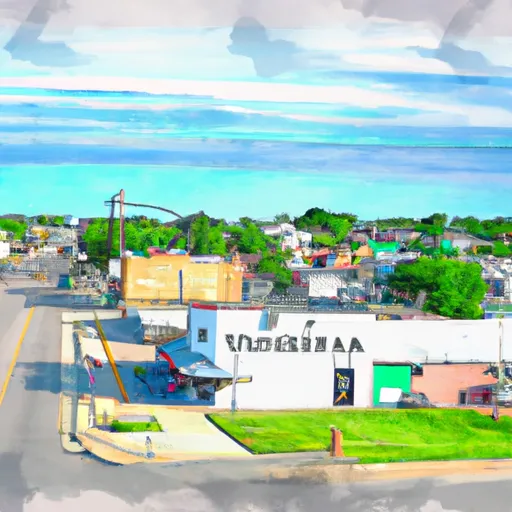-
 Snoflo Premium
Snoflo Premium
Get unlimited access to all our content
With no Ad interruptions! - Start Your Free Trial Login with existing account
Wakita
Eden Index
Climate
8.3
•
Recreation
0.3
•
Community
•
Safeguard
3.4/10

Wakita is a small town located in Grant County, Oklahoma. The climate in Wakita is characterized as continental, with hot summers and cold winters. Summers are typically dry, with temperatures often exceeding 90°F (32°C). Winters can be quite cold, with temperatures dropping below freezing, and occasional snowfall.
Wakita is situated in an area with a diverse hydrology. The town is located near the Bluff Creek watershed, which contributes to the Salt Fork Arkansas River. The river serves as an important water source for the region, providing opportunities for fishing and other recreational water activities.
Outdoor recreation enthusiasts can enjoy several specific opportunities in and around Wakita. The nearby Great Salt Plains State Park offers a range of activities, including boating, fishing, camping, and bird-watching. Additionally, the park is famous for its unique salt flats, attracting visitors who enjoy digging for hourglass-shaped selenite crystals. The area also boasts abundant wildlife, making it a popular spot for hunting and wildlife observation.
In conclusion, Wakita, Oklahoma offers a continental climate with hot summers and cold winters. The town is located near the Bluff Creek watershed, contributing to the Salt Fork Arkansas River. Outdoor enthusiasts can take advantage of the Great Salt Plains State Park, which offers various recreational opportunities such as boating, fishing, camping, bird-watching, crystal digging, hunting, and wildlife observation.
What is the Eden Index?
The Snoflo Eden Index serves as a comprehensive rating system for regions, evaluating their desirability through a holistic assessment of climate health, outdoor recreation opportunities, and natural disaster risk, acknowledging the profound impact of these factors on livability and well-being.
Climate Health Indicator (CHI): 8.3
Wakita receives approximately
819mm of rain per year,
with humidity levels near 85%
and air temperatures averaging around
15°C.
Wakita has a plant hardyness factor of
6, meaning
plants and agriculture in this region thrive during a short period during spring and early summer. Most
plants will die off during the colder winter months.
By considering the ideal temperature range, reliable water supplies, clean air, and stable seasonal rain or snowpacks, the Climate Health Indicator (CHI) underscores the significance of a healthy climate as the foundation for quality living.
A healthy climate is paramount for ensuring a high quality of life and livability in a region, fostering both physical well-being and environmental harmony. This can be characterized by ideal temperatures, reliable access to water supplies, clean air, and consistent seasonal rain or snowpacks.
Weather Forecast
Streamflow Conditions
Arkansas - Keystone
Area Rivers
Arkansas - Keystone
Snowpack Depths
Arkansas - Keystone
Reservoir Storage Capacity
Arkansas - Keystone
Groundwater Levels
Recreational Opportunity Index (ROI): 0.3
The Recreational Opportunity Index (ROI) recognizes the value of outdoor recreational options, such as parks, hiking trails, camping sites, and fishing spots, while acknowledging that climate plays a pivotal role in ensuring the comfort and consistency of these experiences.
Access to outdoor recreational opportunities, encompassing activities such as parks, hiking, camping, and fishing, is crucial for overall well-being, and the climate plays a pivotal role in enabling and enhancing these experiences, ensuring that individuals can engage in nature-based activities comfortably and consistently.
Camping Areas
| Campground | Campsites | Reservations | Toilets | Showers | Elevation |
|---|---|---|---|---|---|
| Great Salt Plains State Park | None | 1,144 ft | |||
| Schrock Park | None | 1,305 ft | |||
| Anthony City Lake | 66 | 1,343 ft | |||
| Argonia River Park | 14 | 1,223 ft |
Nearby Ski Areas
Catastrophe Safeguard Index (CSI):
The Catastrophe Safeguard Index (CSI) recognizes that natural disaster risk, encompassing floods, fires, hurricanes, and tornadoes, can drastically affect safety and the overall appeal of an area.
The level of natural disaster risk in a region significantly affects safety and the overall livability, with climate change amplifying these risks by potentially increasing the frequency and intensity of events like floods, fires, hurricanes, and tornadoes, thereby posing substantial challenges to community resilience and well-being.
Community Resilience Indicator (CRI):
The Community Resilience Indicator (CRI) recognizes that education, healthcare, and socioeconomics are crucial to the well-being of a region. The CRI acknowledges the profound impact of these elements on residents' overall quality of life. By evaluating educational resources, healthcare accessibility, and economic inclusivity, the index captures the essential aspects that contribute to a thriving community, fostering resident satisfaction, equity, and social cohesion.

